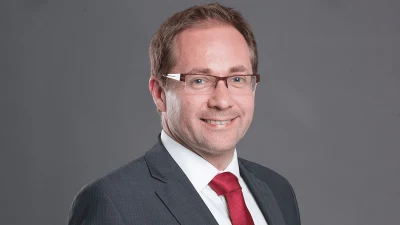Big is best no matter what industry says
For sometime I have been confused by industry experts arguing that there will be an increase in the number of do-it-yourself (DIY) and small dealer groups, when most other financial participants have decided that big is not only best, but essential for survival.
In Australia, we have seen many dealer groups sell out because I suspect they feel the return does not justify the effort and, fortunately for them, there has usually been a product manufacturer happy to buy their distribution in the expectation that they can sell more of their product.
On the other hand, we have also seen institutionally-owned dealer groups disappear because they can’t make them work, while other institutionally-owned groups have consumed large sums of capital over many years for very little return.
Those without strong institutional support have often failed, even when they have had some experience — Eastcorp comes to mind. Over the last 20-years there has been a litany of failures and unfortunately many more will follow, because competition, including price competition, is only just beginning. Brian Thomas from Credit Suisse in his recent paper ‘Hyper Competition’ describes these pending competition forces in detail.
The failures I refer to above have occurred at a time when it has been relatively easy for dealers to make a profit. That won’t be the case going forward with the greatly increasing cost of technology, professional indemnity and compliance. This will combine with client safety concerns over the financial standing of dealers, increased branding competition from banks and major franchises, while at the same time, clients and advisers are becoming more aware and more mobile.
If what I assert is correct, why are we seeing a push to form more dealers when economics, history and logic tells us they are weakening their position and most will fail or do poorly? I have narrowed the push down to three possible reasons.
The first is a lack of homework or excess capital and confidence. This will always happen, particularly by those prepared to bet the farm in the hope that they can breathe new life into an inefficient and/or obsolete business.
The second driver is encouragement from vested interest groups including consultants, software and other product suppliers and fund managers who don’t want to see a few mega advisory groups with increased influence and buying power.
Software providers will always come and go, so we shouldn’t be too concerned about them. Fund managers appear to have the most to lose from the polarisation of advice groups, reducing them to a commodity, so on the surface they appear to have an incentive to encourage breakaway groups.
However, this is not the case. The more enlightened ones understand that it is more efficient for them to deal with a strong dealer who has systems and procedures which make it easier to support their advisers.
Those who struggle to gain business as a fund manager will begin to buy distribution/advisory businesses, whole or part, in an attempt to stay in business. Those buying businesses seem to have forgotten one thing — advisers are masters at double dipping strategies for their clients and will now do the same for themselves, thanks to desperate institutions throwing away money.
We also read regularly how dealers/advisers are clawing back margins from fund managers in various ways. PIS has recently announced its strategy of forming yet another funds management business to try and capture more fund managers’ margins.
While distribution has become much more important, I am not sure that what is happening at the moment is in the best interests of advisers. Desperate advisers trying to secure a future buyer are making the mistake of locking themselves into arrangements which most will regret.
The third reason for the push into forming more dealer groups is the well-known idea of Sealcorp envy. Remember though that the Sealcorp-owned Asgard and other white label wraps are not the same thing. Due to the cost and price competition, and despite having $1.25 billion in wealth-e-account (Count/ Compound’s wrap), I can assure you this is not a valid reason to become a dealer or an IDPS provider.
Readers will have already formed the view that I believe DIY dealers and small fund managers have a poor future. However, the future for good advisers has never been better and will get better provided they stick to advising and don’t get side-tracked by wanting to be a dealer or worse still, sell out to a fund manager, unless they are planning to double dip.
Every dealer wants a good adviser. No one will want an inefficient DIY dealer in the future. Potential buyers will only want to buy the adviser, not the dealer, so why reduce your value by becoming a dealer?
For those wanting to dismiss my views as vested interests aimed at promoting the new dealer group in the Count stable, Compound Investments, remember I have said nothing about what I see as its many advantages.
It is time good independent financial advisers (IFAs) stopped playing into the hands of others. The value of mega franchised IFAs with the backing of a strong, independent and experienced listed vehicle will become very obvious and rewarding in the near future.
Barry Lambert is the managing director of CountFinancial Limited.
Recommended for you
Financial advisers will have to pay around $10.4 million of the impending $47.3 million CSLR special levy but Treasury has expanded the remit to also include super fund trustees and other retail-facing sub-sectors.
Recommendations by the FSC around implementing a practicing certificate framework for advisers would be burdensome and add little value for AFSLs, according to SIAA.
The RBA has made its latest interest rate decision at the the final monetary policy meeting of 2025.
AZ NGA has acquired Sydney-based advice and wealth management firm Financial Decisions, allowing its CEO to step back and focus on providing advice.











